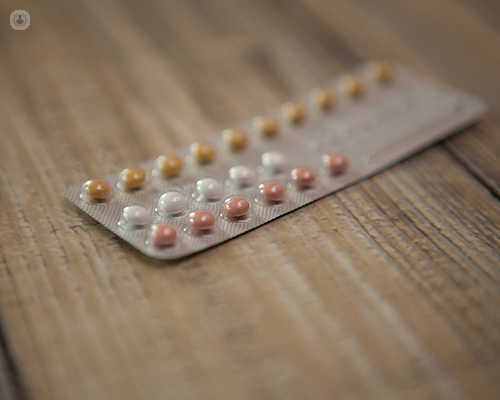


What are contraceptive methods?
Contraceptive methods prevent or reduce the possibility pregnancy. They prevent pregnancy and help to plan the optimal time to have a child. Currently, there are multiple types of contraceptives administered orally, vaginally, as an injection, by subcutaneous or physical implant. Common contraceptives include the pill, patch, implant, IUD, IUS and condoms.
Regarding their effectiveness, not all are classified in the same way and will depend on how well they are used for example. In addition, the use of certain contraceptive methods, such as condoms, can prevent the contraction of sexually transmitted infections (STIs). Many forms of contraception do not protect you against STIs so make sure you know which of those do and don't.

Why are they used?
Contraceptive methods are used to prevent unwanted pregnancies. There are couples who want to enjoy sex but do not want to have children. Therefore, it is important to use contraceptive methods to help avoid them and thus be able to plan the best time to have them.
What types of contraception are there?
Among the different contraceptive methods, the most common are:
Barrier methods:
- Condoms - these must be placed very well to avoid pregnancy. You must be careful not to tear it with fingernails, rings or piercings.
- Female condoms
- Diaphragm - It is a latex or silicone plug that the woman inserts into her vagina and thus prevents the entry of sperm to the cervix. Its drawback is that you must wait between 6 and 8 hours to remove it.
Hormonal methods:
- Pill (oral contraceptives) – consists of taking a pill every day. Its effectiveness, if it is well used, is 99.7%. Efficacy can decrease if the person forgets to take it, it is not done at the same time each day or she suffers vomiting or diarrhoea.
- Intrauterine system (IUS) – a plastic device that is inserted into the vagina which releases progesterone to prevent pregnancy. This is a long-lasting method.
- Vaginal ring – a plastic ring placed inside the vagina which gradually releases hormones. It must be changed with each new menstrual cycle.
- Transdermal patch – a "plaster" that contains hormones and placed on the skin. These are changed each week for three weeks out of each month.
- Injection – required every 8-12 weeks depending on the type.
- Implant – this lasts up to three years and works by slowly releasing hormones to prevent pregnancy.
Intrauterine device (IUD) – a plastic and copper device inserted into the vagina which kills sperm and prevents eggs from becoming fertilised.
Permanent methods:
- Tubal ligation – for women who wish to be permanently protected from pregnancy.
- Vasectomy – for men who no longer wish to have children.
Side effects:
Some contraceptive methods can cause side effects such as mood swings, loss of libido, weight gain and headaches. It is important to choose the best method for yourself. It is not uncommon to try different forms of contraception throughout your reproductive years. Additionally, some people are allergic to latex, so they should be careful when choosing a condom. Some women are unable to have certain hormones, so seek guidance from a GP or specialist.